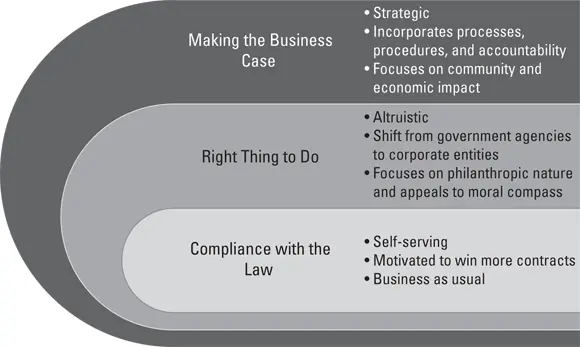Kathey K. Porter - Supplier Diversity For Dummies
Здесь есть возможность читать онлайн «Kathey K. Porter - Supplier Diversity For Dummies» — ознакомительный отрывок электронной книги совершенно бесплатно, а после прочтения отрывка купить полную версию. В некоторых случаях можно слушать аудио, скачать через торрент в формате fb2 и присутствует краткое содержание. Жанр: unrecognised, на английском языке. Описание произведения, (предисловие) а так же отзывы посетителей доступны на портале библиотеки ЛибКат.
- Название:Supplier Diversity For Dummies
- Автор:
- Жанр:
- Год:неизвестен
- ISBN:нет данных
- Рейтинг книги:4 / 5. Голосов: 1
-
Избранное:Добавить в избранное
- Отзывы:
-
Ваша оценка:
- 80
- 1
- 2
- 3
- 4
- 5
Supplier Diversity For Dummies: краткое содержание, описание и аннотация
Предлагаем к чтению аннотацию, описание, краткое содержание или предисловие (зависит от того, что написал сам автор книги «Supplier Diversity For Dummies»). Если вы не нашли необходимую информацию о книге — напишите в комментариях, мы постараемся отыскать её.
Supplier Diversity For Dummies,
Supplier Diversity For Dummies
Supplier Diversity For Dummies — читать онлайн ознакомительный отрывок
Ниже представлен текст книги, разбитый по страницам. Система сохранения места последней прочитанной страницы, позволяет с удобством читать онлайн бесплатно книгу «Supplier Diversity For Dummies», без необходимости каждый раз заново искать на чём Вы остановились. Поставьте закладку, и сможете в любой момент перейти на страницу, на которой закончили чтение.
Интервал:
Закладка:
Executive Order 11246 (1965): Established Requirements for Non-discriminatory Practices
Issued by President Lyndon B. Johnson, this order prohibited organizations that received federal contracts and subcontracts from discriminating based on race, color, religion, and national origin in employment. In 1967, after outcry from women’s groups, the order was amended (Order 11375) to include sex on the list of attributes. Executive Order 11246 also requires federal contractors to take affirmative action to promote the full achievement of equal opportunity for women and minorities. The Office of Federal Contract Compliance Programs (OFCCP), part of the Department of Labor, is in charge of overseeing this requirement for all federal contractors and has developed regulations for these contractors.
Executive Orders 11458 (1969) and 11625 (1971): Economic Entrepreneurial b Equality
There is a scene in the Lee Daniels movie, The Butler, that shows Washington, D.C., burning after the assassination of Martin Luther King in 1968. In that scene Nixon asks his aides what do “they” want? One of the few African American advisers to Nixon told him that Blacks wanted to do business like every other American but were discriminated against in government contracts. That was the supposed seed of supplier diversity.
Issued by President Richard Nixon, this order specifically addressed economic entrepreneurial equality. It provided a framework for developing a national program for minority business enterprises and establishing the Office of Minority Business Enterprise (OMBE) and the Advisory Council for Minority Business Enterprise. Note: In 1977, Executive Order 12007 terminated the Advisory Council for Minority Business Enterprise. OMBE became the Minority Business Development Agency (MBDA). In 2021, the U.S. Department of Commerce announced that the MBDA would be a permanent agency and expanded, and it was elevated with the passage of the Minority Business Development Act of 2021.
Initially, Executive Order 11458 was viewed as a step in the right direction. Unfortunately, the goodwill was short lived because the order didn’t provide language clarifying who can be considered a minority-owned business. This gap left the interpretation of who’d be eligible up to agencies and organizations, so the order had little to no impact on fostering economic inclusion.
Nixon replaced Executive Order 11458 with Executive Order 11625, which attempted to solve the problem of defining who was eligible for these business programs. The order introduced vague language such as “socially and economically disadvantaged persons” and defined minorities as not just Black people but also Puerto Ricans, Spanish-speaking Americans, American Indians, Eskimos, and Aleuts. Many felt this language diluted the initial intention of the executive orders, which was to address the need for social justice for Black Americans. Because of an outcry from women’s rights groups, women were also included in this category and would go on to be classified as minority or disadvantaged, a designation that continues to this day.
Public Law 95-507 (1978)
On October 24, 1978, President Jimmy Carter signed Public Law 95-507 to amend the Small Business Act and the Small Business Investment Act of 1958. This change made federal procurement contracting more readily accessible to all small businesses. The law PL 95-507 specifies that the government’s policy is to provide viable opportunities to small businesses, small disadvantaged businesses, and women-owned businesses in both its acquisitions and its awarding of subcontracts.
Examining the Evolution of Supplier Diversity
The executive orders I cover in the earlier section “ Looking at Where It All Began” were based on the government’s desire to do something to address systemic economic disparities within the Black community. The orders stated what needed to be done with regard to inclusive hiring and business practices, but they didn’t provide a framework for how it should be done. This vacuum left the field wide open to interpretation, resulting in abuse, fraud, and neglect. Organizations and agencies were left with their own understanding and created programs that they felt worked for them and were reflective of their cultures at the time. For better or worse, the organizations of yesteryear aren’t the culture-centric organizations of today. Not every organization was successful with its efforts. But despite these mixed results, supplier diversity programs forged ahead and began to really take shape during the 1970s.
According to Dr. Fred McKinney, one of the country’s foremost supplier diversity historians (not to mention technical editor and contributor for this book), supplier diversity includes three distinct periods: compliance, right thing to do, and making the case. Figure 2-1 looks at each period of supplier diversity and the shift in organizational priorities during each phase.

FIGURE 2-1:Evolution of supplier diversity.
MAYOR MAYNARD JACKSON AND SUPPLIER DIVERSITY IN ATLANTA, GEORGIA
A legendary example that resulted in the creation of some of the most substantial Black businesses that still exist today is the one created in Atlanta by the Honorable Mayor Maynard Jackson. This demonstrated the potential of supplier diversity.
Maynard Jackson, Atlanta’s first Black mayor, is one of the most revered mayors in Atlanta’s history; many regard him as the father of modern-day supplier diversity. He won the election partly on his promise of economic prosperity for all Atlantans. His approach made him a legend and made Atlanta a model for economic inclusion.
At the time of Jackson’s election in 1974, Atlanta was embarking on one of its most ambitious projects ever — expanding the Hartsfield Airport (now commonly known as the Hartsfield-Jackson International Airport) into an international hub. Upon assuming office, Mayor Jackson met with business leaders and told them he would move forward with the expansion of Hartsfield Airport on one condition: 25 percent of all contracts were to be set aside for minority firms. Jackson reportedly told those in opposition that the city wouldn’t build the airport if they didn’t agree to this stipulation, and he held fast to his offer of 75 percent of the project or 100 percent of nothing. As expected, the business elite recoiled, and Jackson’s administration prepared for a long fight.
Over the next two years, Mayor Jackson fought some of the most powerful men in the South who were using their clout to call in political chips to get the governor and state legislature to take control of the airport expansion project. For Mayor Jackson, the stakes were high. This was not only a campaign promise but also an opportunity to provide Black business owners something previously denied them: access to a share of contracts on a major public works project initially valued at $450 million. The mayor used the delay to sell corporations on creative ways to work with Black firms. One novel concept at the time was creating a joint venture with minority firms. This model is now widely used across the world and is often a requirement on public construction-related projects.
By 1976, the parties finally came to an agreement. All parties would eventually agree to Jackson’s modified version of his plan: a goal (not a mandate) of 20 to 25 percent participation of minority-owned firms.
Five years later, Jackson increased the percentage of contracts awarded to minorities from less than 1 percent in 1973 to roughly 39 percent. This surge strengthened the Black middle class and created an affluent business community that still exists today.
Читать дальшеИнтервал:
Закладка:
Похожие книги на «Supplier Diversity For Dummies»
Представляем Вашему вниманию похожие книги на «Supplier Diversity For Dummies» списком для выбора. Мы отобрали схожую по названию и смыслу литературу в надежде предоставить читателям больше вариантов отыскать новые, интересные, ещё непрочитанные произведения.
Обсуждение, отзывы о книге «Supplier Diversity For Dummies» и просто собственные мнения читателей. Оставьте ваши комментарии, напишите, что Вы думаете о произведении, его смысле или главных героях. Укажите что конкретно понравилось, а что нет, и почему Вы так считаете.












